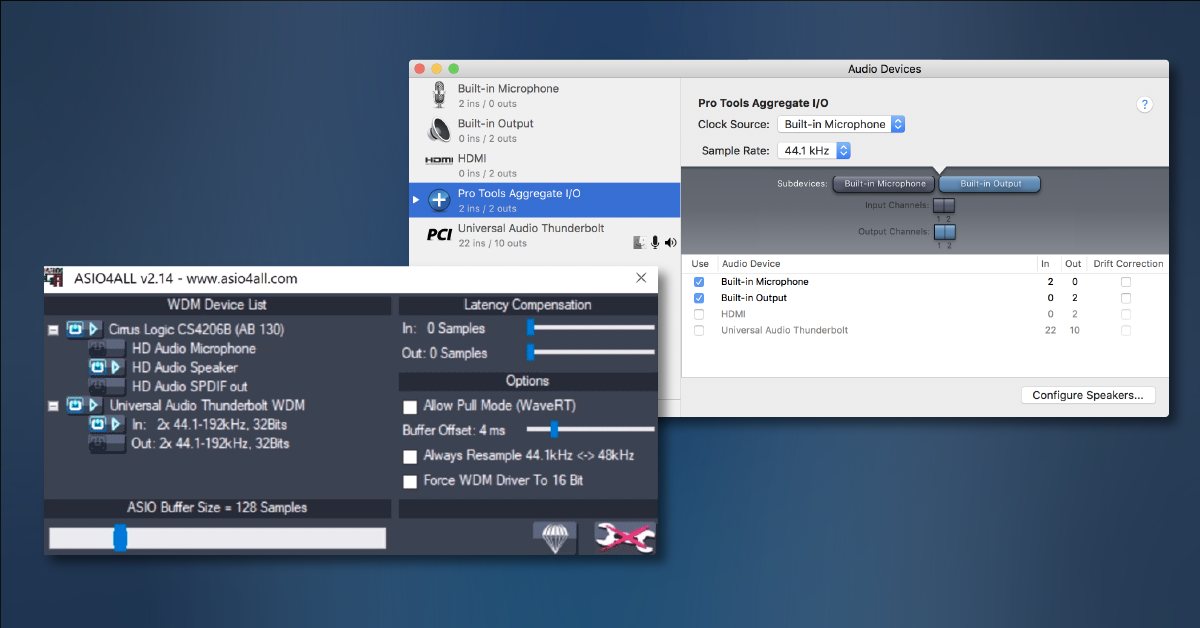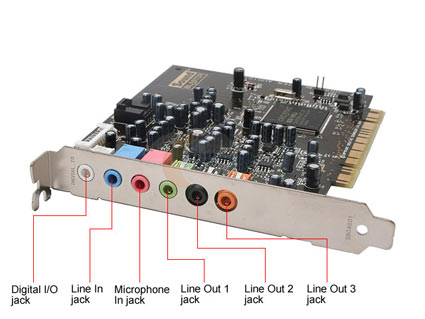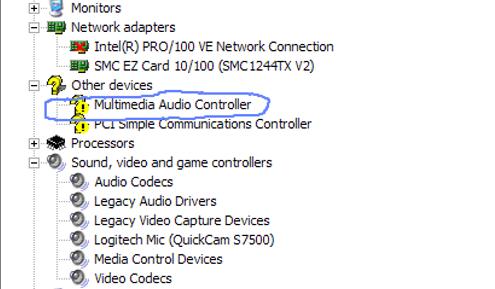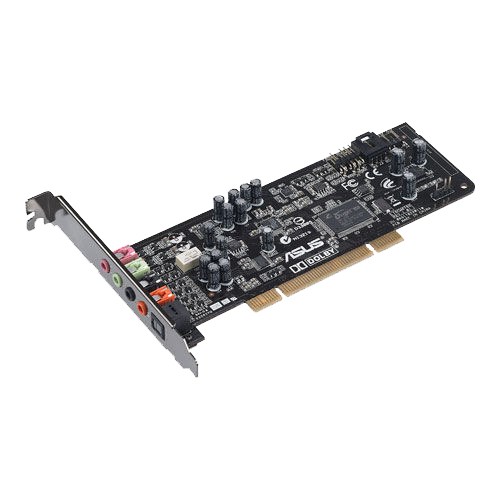Click Sound Blasters. Scroll down until you find your sound card name or model number. Click on the product and you'll see download links to the most recent Creative Sound Blaster drivers for Windows 10. If no Windows 10 driver is available for your Sound Blaster device, you'll see instead an Estimated Available Date. Take note of that. In Internet Explorer, click Tools, and then click Internet Options. On the Security tab, click the Trusted Sites icon. Click Sites and then add these website addresses one at a time to the list: You can only add one address at a time and you must click Add after each one. VIA drivers for audio sound card VIA Vinyl Audio represents VIA's acclaimed line of dedicated audio chips, offering the highest level of audio fidelity and best feature sets available on the market. VIA's chips are the basis for almost all of the major high-end soundcards and audio solutions. The ASUS Xonar SE delivers 5.1-channel, 192kHz/24-bit Hi-Res audio with a 116dB signal-to-noise ratio and built-in 300ohm headphone amplifier providing rich, immersive sound with punchy, defined bass. Connect front panel audio to the onboard header for easy access. Exclusive Hyper Grounding technology ensures signal insulation to reduce distortion and interference.
Popular Manufacturers
Latest Drivers in Audio and Multimedia
- Realtek UAD Driver is a third-party modification of Realtek drivers for older computers that support Realtek Legacy HDA FF00 drivers.
- October 7, 2020
- Windows (all)
- 45.6 MB
- Keep your VIA audio working at its peek with the latest driver.
- June 3, 2019
- Windows 10
- 124 MB
- These are the lastet Creative Sound Blaster 4 Drivers reference drivers which work for most Sound Blaster 4 sound cards.
- March 20, 2019
- Windows (all)
- 256 MB
- Download the latest Realtek AC 97 ALC650 Audio CODECs for Windows 98, 2000, XP, 2003, Vista and 7.
- January 2, 2019
- Windows (all)
- 29.7 MB
- This driver is intended for Windows 10 only and comes from the Microsoft Update Catalog.
- June 13, 2018
- Windows 10
- 146 MB
- July 27, 2017
- Windows 7
- 10.3 MB
- September 4, 2012
- Windows XP
- 25.2 MB
- Realtek HD (High Definition) Audio Codec Driver for Windows Vista/7/8/10 32-bit and 64-bit. Keep your PC sounding crisp and clear.
- July 26, 2017
- Windows (all)
- 413 MB
- Realtek HD (High Definition) Audio Codec Driver for Windows Vista/7/8/10 32-bit and 64-bit. Keep your PC sounding crisp and clear.
- January 13, 2017
- Windows 7/8/10
- 359 MB
- Realtek's latest PCIe LAN driver offers performance and stability improvements for the RTL81xx and RTL84xx PCI Express Gigabit Ethernet chips.
- January 20, 2017
- Windows (all)
- 10.0 MB
- Realtek HD (High Definition) Audio Codec Driver for Windows Vista/7/8/10 32-bit and 64-bit. Keep your PC sounding crisp and clear.
- December 2, 2016
- Windows 7/8/10
- 354 MB
- The audio drivers provided on this website are general sound effect drivers with common functions.
- September 11, 2007
- Windows 98/Me/2000/XP
- 4.0 MB
- HDMI audio support for the VX11 system media processor in Windows XP.
- September 20, 2016
- Windows XP
- 8.5 MB
- The audio drivers provided on this website are general sound effect drivers with common functions.
- September 11, 2007
- Windows 98/Me/2000/XP
- 7.0 MB
- Keep your VIA audio working at its peek with the latest driver.
- September 19, 2016
- Windows Vista / 7 / 8
- 139 MB
- VIA Vinyl HD Audio codecs represent the next generation of sound quality, supporting the high definition HD Audio standard for a whole new immersive surround sound experience.
- August 11, 2016
- Windows 7 / 8
- 143 MB
- This download provides the Realtek audio driver for the front panel audio jack on Intel NUC products. The audio driver is required if you plan to use the front panel audio jack.
- July 18, 2016
- Windows (all)
- 336 MB
- Realtek High Definition Audio Driver for Windows 7, 8.1 and 10.
- November 20, 2015
- Windows 7/8/10
- 239 MB
- This download contains the driver and application for use with your Sound Blaster E5, for Windows 10 and Mac OS X.
- November 12, 2015
- Windows (all)
- 57.4 MB
- The Sound Blaster E5 is a 24-bit/192kHz high resolution USB DAC and portable headphone amplifier.
- November 12, 2015
- Windows (all)
- 2.9 MB
- This download contains the driver and application for use with your Sound Blaster 5.1 VX. For more details, read the rest of this web release note.
- September 28, 2015
- Windows 10
- 40.6 MB
- This download contains the driver and application for use with your Sound Blaster R3 under Windows or Mac OS.
- September 8, 2015
- Windows 10
- 83.8 MB
- Here you can find all driver for your Creative Sound Blaster X7 and Creative Sound Blaster X7 Limited.
- September 8, 2015
- Windows (all)
- 136 MB
- Sound Blaster X-Fi HD / Digital Music Premium HD Software Pack for Windows 10.
- August 24, 2015
- Windows 10
- 148 MB
- This download contains the driver and applications for use with your Sound Blaster X-Fi series of audio devices.
- August 21, 2015
- Windows (all)
- 47.9 MB
- Analog Devices SoundMAX Driver for Windows XP, 2000, 2003 and Vista. This driver is compatible with 32 and 64bit operating systems.
- June 24, 2013
- Windows XP/Vista/7
- 12.2 MB
- May 14, 2014
- Windows 2000/XP
- 32.0 MB
- This package contains the latest audio driver for all EVGA mainboards with and X58 SLI chipset.
- August 25, 2014
- Windows (all)
- 55.1 MB
- EVGA X58 Series Realtek Audio Driver with WQHL Certification.
- August 25, 2014
- Windows XP/Vista/7
- 81.5 MB
- This download is a driver providing Microsoft Windows (XP,Vista,7,8, and 8.1) support for the Creative Sound Blaster X-Fi series of audio devices.
- August 15, 2014
- Windows (all)
- 48.9 MB
- This driver works for any Gigabyte motherboard with a Realtek Audio chip.
- July 28, 2014
- Windows XP/Vista/7
- 118 MB
- The latest IDT High Definition Audio Driver for the ECS 945GCT-M2(V1.0) motherboard now offer support for Windows 7.
- July 14, 2014
- Windows (all)
- 26.5 MB
- Via Vinyl Envy24 controllers for Windows XP to 7, 32 and 64-bit. These audio drivers work for all Envy24 variants: Envy24MT, Envy24DT, Envy24GT, Envy24PT, Envy24HT, and Envy24HT-S.
- February 22, 2012
- Windows XP/Vista/7
- 9.1 MB
- December 6, 2013
- Windows (all)
- 20.5 MB
- June 3, 1999
- Windows 95/98
- 16.0 MB
- Aztech PCI 168 Win NT 4.
- June 3, 1999
- Windows NT
- 1.2 MB
- Aztech PCI 168 Win95/98 Driver ver 1.
- June 3, 1999
- Windows 95/98
- 423 KB
- Aztech PCI 64-Q3D Win NT 4.
- June 3, 1999
- Windows NT
- 9.7 MB
- Aztech PCI 368-DSP Win NT 4.
- July 21, 1999
- Windows NT
- 4.6 MB
- Aztech PCI 288-Q3D Win95/98 Driver CD ver 1.
- July 21, 1999
- Windows 95/98
- 16.8 MB
- May 20, 2014
- Windows (all)
- 65.9 MB
- he front panel includes a conveniently located 1/4' microphone input and 1/4' headphone jack with a studio quality headphone amp and volume control.
- May 20, 2014
- Windows (all)
- 152.0 MB
- Operating system support: Windows Vista / 7 / 8.
- November 7, 2012
- Windows Vista / 7 / 8
- 125.0 MB
- Download the latest Realtek HD ALC 880 Audio CODECs.
- March 5, 2008
- Windows 2000/XP
- 25.4 MB
- The next generation Sound Blaster card - the Sound Blaster Recon3D - is powered by Sound Core3D and heralds a new age in 3D gaming audio and online voice communication.
- April 4, 2014
- Mac OS X
- 1.1 MB
- The next generation Sound Blaster card - the Sound Blaster Recon3D - is powered by Sound Core3D and heralds a new age in 3D gaming audio and online voice communication.
- April 4, 2014
- Windows (all)
- 1.4 MB
- Operating system support: Windows Vista / 7 / 8.
- December 9, 2013
- Windows Vista / 7 / 8
- 220.6 MB
- March 20, 2009
- Windows Vista
- 154.0 MB
- March 20, 2009
- Windows XP
- 154.0 MB
- December 12, 2013
- Windows 8
- 106.0 MB
 -->
-->In Windows 10 you can write a universal audio driver that will work across many types of hardware. This topics discusses the benefits of this approach as well as the differences between different platforms. In addition to the Universal Windows drivers for audio, Windows continues to support previous audio driver technologies, such as WDM.
Getting Started with Universal Windows drivers for Audio
IHVs can develop a Universal Windows driver that works on all devices (desktops, laptops, tablets, phones). This can reduces development time and cost for initial development and later code maintenance.

These tools are available to develop Universal Windows driver support:
Visual Studio 2015 Support: There is a driver setting to set “Target Platform” equal to “Universal”. For more information about setting up the driver development environment, see Getting Started with Universal Windows Drivers.
APIValidator Tool: You can use the ApiValidator.exe tool to verify that the APIs that your driver calls are valid for a Universal Windows driver. This tool is part of the Windows Driver Kit (WDK) for Windows 10, and runs automatically if you are using Visual Studio 2015 . For more information, see Validating Universal Windows Drivers.
Updated DDI reference documentation: The DDI reference documentation is being updated to indicate which DDIs are supported by Universal Windows drivers. For more information, see Audio Devices Reference.
Create a Universal Audio Driver
For step-by-step guidance, see Getting Started with Universal Windows Drivers. Here is a summary of the steps:
Load the universal audio sysvad sample to use as starting point for your universal audio driver. Alternatively, start with the empty WDM driver template and add in code from the universal sysvad sample as needed for your audio driver.
In the project properties, set Target Platform to 'Universal'.
Create an installation package: If your target is device running Windows 10 for desktop editions (Home, Pro, Enterprise, and Education), use a configurable INF file. If your target is device running Windows 10 Mobile, use PkgGen to generate an .spkg file.
Build, install, deploy, and debug the driver for Windows 10 for desktop editions or Windows 10 Mobile.
Sample Code

Sysvad and SwapAPO have been converted to be Universal Windows driver samples. For more information, see Sample Audio Drivers.
Available Programming Interfaces for Universal Windows drivers for Audio
Starting with Windows 10, the driver programming interfaces are part of OneCoreUAP-based editions of Windows. By using that common set, you can write a Universal Windows driver. Those drivers will run on both Windows 10 for desktop editions and Windows 10 Mobile, and other Windows 10 versions.
The following DDIs to are available when working with universal audio drivers.
Convert an Existing Audio Driver to a Universal Windows driver
Follow this process to convert an existing audio driver to a Universal Windows driver.
Determine whether your existing driver calls will run on OneCoreUAP Windows. Check the requirements section of the reference pages. For more information see Audio Devices Reference.
Recompile your driver as a Universal Windows driver. In the project properties, set Target Platform to 'Universal'.
Use the ApiValidator.exe tool to verify that the DDIs that your driver calls are valid for a Universal Windows driver. This tool is part of the Windows Driver Kit (WDK) for Windows 10, and runs automatically if you are using Visual Studio 2015. For more information, see Validating Universal Windows Drivers.
If the driver calls interfaces that are not part of OneCoreUAP, compiler displays errors.
Replace those calls with alternate calls, or create a code workaround, or write a new driver.
Creating a componentized audio driver installation
Overview
To create a smoother and more reliable install experience and to better support component servicing, divide the driver installation process into the following components.
- DSP (if present) and Codec
- APO
- OEM Customizations
Optionally, separate INF files can be used for the DSP and Codec.
This diagram summarizes a componentized audio installation.
A separate extension INF file is used to customize each base driver component for a particular system. Customizations include tuning parameters and other system-specific settings. For more information, seeUsing an Extension INF File.
An extension INF file must be a universal INF file. For more information, see Using a Universal INF File.
For information about adding software using INF files, see Using a Component INF File.
Submitting componentized INF files
APO INF packages must be submitted to the Partner Center separately from the base driver package. For more information about creating packages, see Windows HLK Getting Started.
SYSVAD componentized INF files
To see an example of componentized INF files examine the sysvad/TabletAudioSample, on Github.
| File name | Description |
|---|---|
| ComponentizedAudioSample.inf | The base componentized sample audio INF file. |
| ComponentizedAudioSampleExtension.inf | The extension driver for the sysvad base with additional OEM customizations. |
| ComponentizedApoSample.inf | An APO sample extension INF file. |
The traditional INF files continue to be available in the SYSVAD sample.
| File name | Description |
|---|---|
| tabletaudiosample.inf | A desktop monolitic INF file that contains all of the information needed to install the driver. |
APO vendor specific tuning parameters and feature configuration
All APO vendor system specific settings, parameters, and tuning values must be installed via an extension INF package. In many cases, this can be performed in a simple manner with the INF AddReg directive. In more complex cases, a tuning file can be used.

Base driver packages must not depend on these customizations in order to function (although of course functionality may be reduced).
UWP Audio Settings APPs
To implement an end user UI, use a Hardware Support App (HSA) for a Windows Universal Audio driver. For more information, see Hardware Support App (HSA): Steps for Driver Developers.

Programmatically launching UWP Hardware Support Apps
To programmatically launch a UWP Hardware Support App, based on a driver event (for example, when a new audio device is connected), use the Windows Shell APIs. The Windows 10 Shell APIs support a method for launching UWP UI based on resource activation, or directly via IApplicationActivationManager. You can find more details on automated launching for UWP applications in Automate launching Windows 10 UWP apps.
APO and device driver vendor use of the AudioModules API
The Audio Modules API/DDI is designed to standardize the communication transport (but not the protocol) for commands passed between a UWP application or user-mode service to a kernel driver module or DSP processing block. Audio Modules requires a driver implementing the correct DDI to support module enumeration and communication. The commands are passed as binary and interpretation/definition is left up to the creator.
Audio Modules is not currently designed to facilitate direct communication between a UWP app and a SW APO running in the audio engine.
For more information about audio modules, see Implementing Audio Module Communication and Configure and query audio device modules.
APO HWID strings construction
APO Hardware IDs incorporate both standard information and vendor-defined strings.
They are constructed as follows:
Where:
- v(4) is the 4-character identifier for the APO device vendor. This will be managed by Microsoft.
- a(4) is the 4-character identifier for the APO, defined by the APO vendor.
- n(4) is the 4-character PCI SIG-assigned identifier for the vendor of the subsystem for the parent device. This is typically the OEM identifier.
- s(4) is the 4-character vendor-defined subsystem identifier for the parent device. This is typically the OEM product identifier.
Plug and Play INF version and date evaluation for driver update
The Windows Plug and Play system evaluates the date and the driver version to determine which drive to install when multiple drivers exist. For more information, see How Windows Ranks Drivers.
To allow the latest driver to be used, be sure and update the date and version, for each new version of the driver.
Drivers Microsoft Sound Cards & Media Devices -
APO driver registry key
For third party-defined audio driver/APO registry keys, use HKR with the exception of HKLMSystemCurrentControlSet.
Use a Windows Service to facilitate UWP <-> APO communication
A Windows Service is not strictly required for management of user-mode components like APOs, however, if your design includes an RPC server to facilitate UWP <-> APO communication, we recommend implementing that functionality in a Windows Service that then controls the APO running in the audio engine.
Building the Sysvad Universal Audio Sample for Windows 10 Desktop
Complete the following steps to build the sysvad sample for Windows 10 desktop.
Locate the desktop inf file (tabletaudiosample.inf) and set the manufacturer name to a value such as 'Contoso'
In Solution Explorer, select and hold (or right-click) Solution 'sysvad' , and choose Configuration Manager. If you are deploying to a 64 bit version of Windows, set the target platform to x64. Make sure that the configuration and platform settings are the same for all of the projects.
Build the all of the projects in the sysvad solution.
Locate the output directory for the build from the build. For example it could be located in a directory like this:
Navigate to the Tools folder in your WDK installation and locate the PnpUtil tool. For example, look in the following folder: C:Program Files (x86)Windows Kits10Toolsx64PnpUtil.exe .
Copy the following files to the system that you want to install the sysvad driver:
| File | Description |
|---|---|
| TabletAudioSample.sys | The driver file. |
| tabletaudiosample.inf | An information (INF) file that contains information needed to install the driver. |
| sysvad.cat | The catalog file. |
| SwapAPO.dll | A sample driver extension for a UI to manage APOs. |
| PropPageExt.dll | A sample driver extension for a property page. |
| KeywordDetectorAdapter.dll | A sample keyword detector. |
Drivers Microsoft Sound Cards & Media Devices Download
Install and test the driver
Follow these steps to install the driver using the PnpUtil on the target system.
Open and Administrator command prompt and type the following in the directory that you copied the driver files to.
pnputil -i -a tabletaudiosample.inf
The sysvad driver install should complete. If there are any errors you can examine this file for additional information:
%windir%infsetupapi.dev.logIn Device Manager, on the View menu, choose Devices by type. In the device tree, locate Microsoft Virtual Audio Device (WDM) - Sysvad Sample. This is typically under the Sound, video and game controllers node.
On the target computer, open Control Panel and navigate to Hardware and Sound > Manage audio devices. In the Sound dialog box, select the speaker icon labeled as Microsoft Virtual Audio Device (WDM) - Sysvad Sample, then select Set Default, but do not select OK. This will keep the Sound dialog box open.
Locate an MP3 or other audio file on the target computer and double-click to play it. Then in the Sound dialog box, verify that there is activity in the volume level indicator associated with the Microsoft Virtual Audio Device (WDM) - Sysvad Sample driver.
